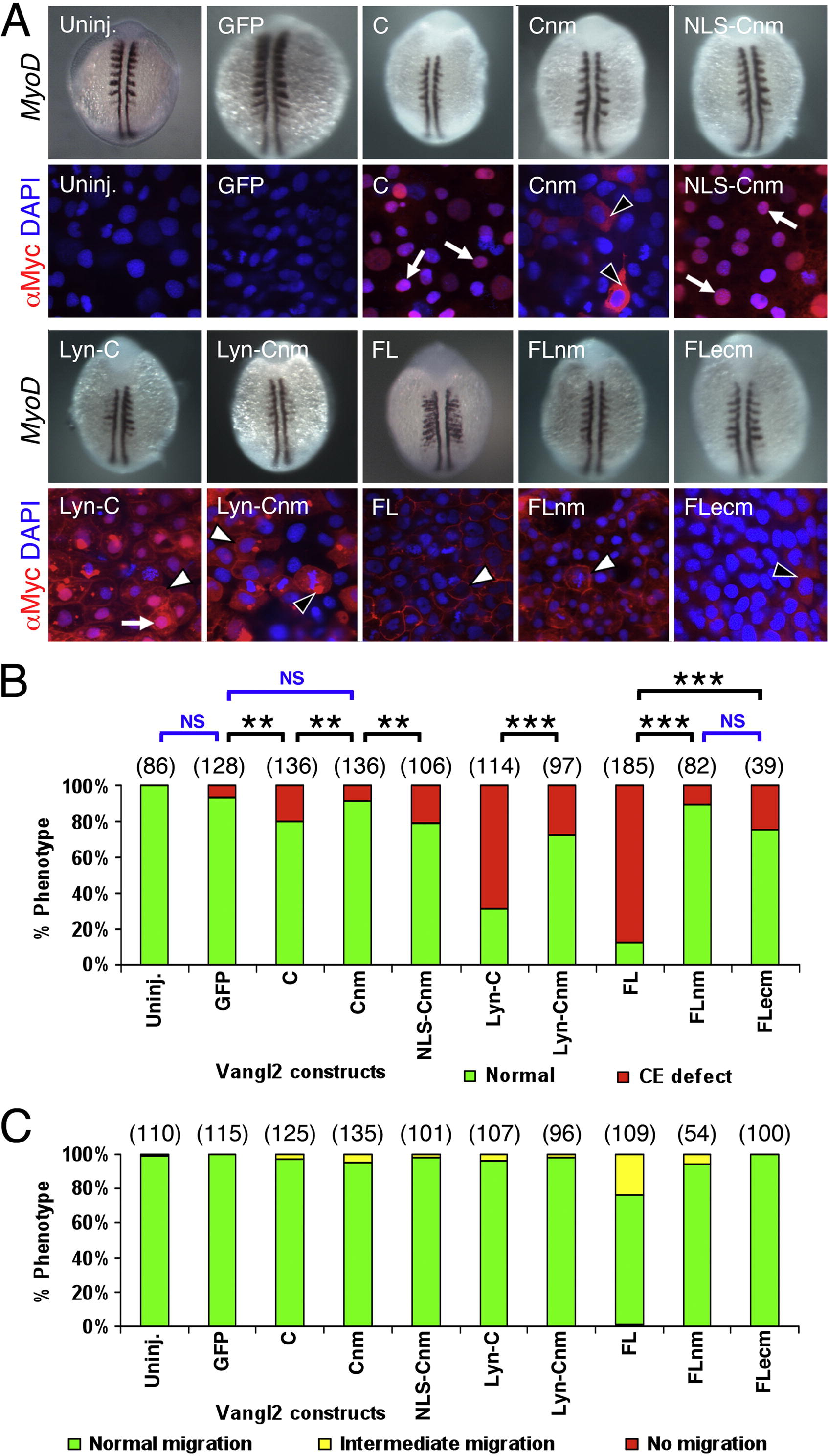Fig. 6 Potential role for nuclear localization of Vangl2 for CE movements. (A) Two panels for each injection condition, with upper panel showing myod1 in situ of 12–14 hpf embryo, and lower panel showing anti-Myc immunostaining (red) of ectodermal cells in 10 hpf embryo, counterstained with DAPI (blue) to stain nuclei. Uninjected (Uninj.) and GFP RNA injection controls are indicated. Following injection of RNA, Vangl2 C localizes strongly to the nucleus (arrows). The corresponding myod1 in situ shows that CE movements of paraxial mesoderm are not affected. Expression of Vangl2 Cnm with mutations in the putative nuclear localization motif lead to failure of nuclear accumulation, and the protein is instead found in the cytoplasm (black arrowheads). Addition of a heterologous nuclear localization signal restores Vangl2 NLS-Cnm localization to the nucleus. Whereas Vangl2 Lyn-C is frequently found in the nucleus (arrow) and plasma membrane (white arrowhead), Vangl2 Lyn-Cnm fails to localize to the nucleus, but is found in cytoplasmic puncta (black arrowhead) and on the plasma membrane (white arrowhead). (B) Mutating the nuclear localization motif affects Vangl2 activity. The ability of Vangl2 FL and Vangl2 Lyn-C to efficiently induce CE defects was essentially abolished when the putative nuclear motif was mutated. (C) Transient overexpression of Vangl2 nuclear and extracellular loop mutants did not cause defects in FBM neuron migration. See Fig. 4 legend for scoring criteria. Number of embryos scored in parenthesis for each construct. Data pooled from 3 to 5 experiments. In (B), significant differences p < 0.05 and p < 0.001 (Pearson Chi Square test) are indicated by (**) and (***), respectively. NS, not significant.
Reprinted from Mechanisms of Development, 131, Pan, X., Sittaramane, V., Gurung, S., and Chandrasekhar, A., Structural and temporal requirements of Wnt/PCP protein Vangl2 function for convergence and extension movements and facial branchiomotor neuron migration in zebrafish, 1-14, Copyright (2014) with permission from Elsevier. Full text @ Mech. Dev.

